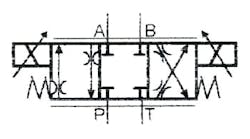While attending the Reliable Plant Conference & Expo last year, one of the speakers said something I thought was pretty profound, but he seemed to just brush it off as common knowledge.
Terry Taylor, of Arch Coal Inc., St. Louis, presented a paper titled, “Highwall Miner Reliability — From Rags to Riches.” Taylor outlined some of the practices his company’s management team followed to increase the production of one of its highwall miners — which was producing only about half of its potential. Taylor explained how they evaluated the machine’s service records to determine the most common types of failures, their frequency, and severity.
Some of this preventive maintenance involves periodic inspections, followed up by corrective action. If you find a hose has worked loose from its restraint, fix it. If a fitting has come loose, tighten it.
However, most preventive maintenance involves routine service. Take regular fluid samples to assess the cleanliness of hydraulic fluid. Change filters at regular intervals. Hook up filter carts to clean fluid in reservoirs.
All this routine service is pretty dull, and this is where Taylor grabbed my attention. He said mechanics are like anyone else; they like excitement and a challenge. So if equipment goes down because a pump fails or a valve sticks, everyone gets stressed out because they need to get equipment running again. So in comes the maintenance technician on his white horse. He pulls out his collection of super tools and instruments, changes out the pump or frees the sticky valve, and the machine comes back on line. He becomes the man of the hour, our hero.
I can also picture how management might view preventive maintenance. Management may wonder why they’re paying all these guys good money to change filters and tighten fittings. They don’t realize — or have forgotten — that it’s all this routine maintenance that keeps machines from suffering unscheduled downtime. Typically, they may reduce the workforce to cut costs, but then they’re surprised when downtime increases.
Unfortunately, management may never realize that the $50,000 they might save from laying off someone ends up costing the company three times that (or more) in unscheduled downtime over that same year. It’s not unusual for high-production machinery to be worth $1000 or more per hour. At that rate, it only takes a few breakdowns to offset any savings in the payroll.



